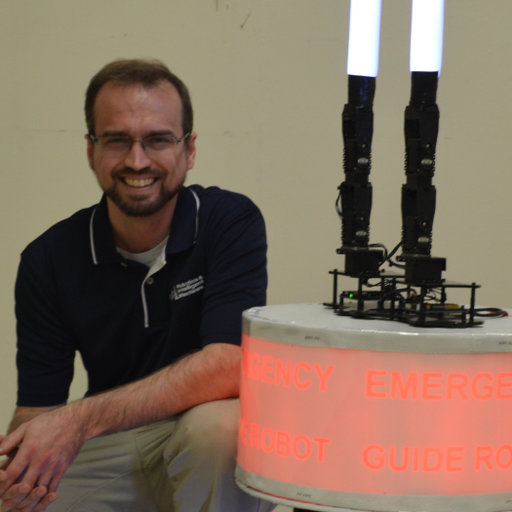Programme
The workshop is held in conjunction with RO-MAN 2018 in NanJing, China at the "Jiangsu International Conference Center" (Zhongshan hotel). The structure of the Workshop may include, but is not necessarily limited to the following organisation:
- Introduction of the Workshop and main topics
- Invited speakers presentations
- Oral presentations of full papers
- Open discussion with the invited speakers
Keynote Speakers
-
Emilia Barakova, Department of Industrial Design, Technische Universiteit Eindhoven (Netherlands)

Prof. Emilia Barakova is Assistant Professor (UD) at Department of Industrial Design of Technische Universiteit Eindhoven. She has Masters Degree in Electronics and Automation from Technical University of Sofia (Bulgaria) and PhD in Mathematics and Physics from Groningen University (The Netherlands, 1999). Her expertise include behavioural robotics, robotics for behavioural training of hildren with autism, multisensory and sensory motor interaction, social robotics and intelligent systems.
-
Paul Robinette, Department of Mechanical Engineering, Massachusetts Institute of Technology (USA)

Dr. Paul Robinette is a research scientist at MIT in the Department of Mechanical Engineering. His research focuses on human-robot trust in time-critical situations. He received the PhD in Robotics from Georgia Institute of Technology in 2015. He received the BS in Physics, and BS in Computer Engineering from Missouri University of Science and Technology in 2008 and the MS in Computer Engineering from the same institution in 2010. His expertise include human-robot trust, user-centered robot behaviours, designing robotic platforms, underwater robots.
Schedule
| Time | Session | Speaker | ||
|---|---|---|---|---|
| 08:30 - 08:45 | Introduction | |||
| 08:45 - 09:45 | Invited Speaker | Paul Robinette | ||
| 09:45 - 10:00 | First Session | Chiara De Jong | ||
| 10:00 - 10:30 | Coffee Break | |||
| 10:30 - 10:45 | Second Session | Young Hoon Oh | ||
| 10:45 - 11:45 | Invited Speaker | Emilia Barakova | ||
| 11:45 - 11:55 | Third Session | Silvia Rossi | ||
| 11:55 - 12:00 | Conclusion |
Introduction (08:30)
Invited Speaker Presentation (08:45)
User, Teammate, and Bystander Trust in Robots
Paul Robinette
Humans may take on many roles as they interact with robots. In this talk, I will start by presenting prior results that show participants overtrusted a robot when they were in the role of a user in an emergency situation. I will then present ongoing research on human-robot teaming in a marine environment that is producing interesting results on human- robot trust in teammate roles. I will conclude the talk with some additional ongoing work where humans take on a bystander role in relation to the robot.
First Workshop Session (09:45)
Children's Acceptance of Social Robots: A narrative review of the research 2000-2017
Chiara De Jong, Jochen Peter, Rinaldo Kühne and Alex Barco
Although social robots progressively enter children’s lives, little is known about children’s acceptance of social robots and its antecedents. To fill this research gap, this narrative review surveyed 34 articles on child-robot interaction published between 2000 and 2017. We focused on robot, user, and interaction characteristics as antecedents of children’s intentional and behavioral social robot acceptance. In general, children readily accept robots. However, we identify several patterns in the antecedents of children’s acceptance of social robots. Additionally, we found various theoretical and methodological shortcomings in the field. The review concludes with recommendations and directions for future research on children’s acceptance of social robots.
Coffee Break (10:00)
Second Workshop Session (10:30)
Analysis of Design Elements to Enhance Acceptance of Companion Robot in Older Adults
Young Hoon Oh, Jaewoong Kim and Da Young Ju
Psychological problems of older adults have long been studied by researchers. To relieve their problems researchers have developed and identified several benefits of companion robots. However, researchers have mainly focused research on the feasibility of companion robots. They have partially discussed the design elements of robots, and older adults’ characteristics were not fully considered. Therefore, we conducted survey (N=195) to analyze if elderly depression affects on the preference of types, weight, and material of companion robots. We also analyzed their data by age and gender. One of the key result was that depression was significant factors in five weight levels. This means that highly depressed people were very sensitive to heavy weight. Another key result was preference trend. Men liked dogs the most, while women preferred newborn babies the most. Older adults preferred lighter weights on all conditions. Although there was no significant difference in the material test, microfiber was the most preferred material. Thus, this study has focused on the characteristic of older adults and analyzed data on three design elements. Based on the findings, we suggested essential design guidelines of companion robot as well. Further details and limitations of the study are presented.
Invited Speaker Presentation (10:45)
Trusting robots
Emilia Barakova
This talk briefly summarizes different perspectives on trust in social robotics and reports a laboratory study where SociBotTM, a robot capable of displaying different faces and dynamic social cues, delivered persuasive messages to participants while playing a game. In-game choice behavior was logged, and trust and reactance toward the advisor were measured using questionnaires. We show which facial features of a robotic advisor is more persuasive, evokes more trust, and less psychological reactance. We also looked at the gender effects on thust in diadic the human-robot interactions. The results suggest that robots that are intended to influence human behavior should be designed to have facial characteristics we trust in humans, and help us design robots that we trust.
Third Workshop Session (11:45)
Towards an Evaluation of the Role of Social Cues in the User Experience with Socially Assistive Robots Providing Recommendations
Silvia Rossi, Giovanni Ercolano and Martina Ruocco
